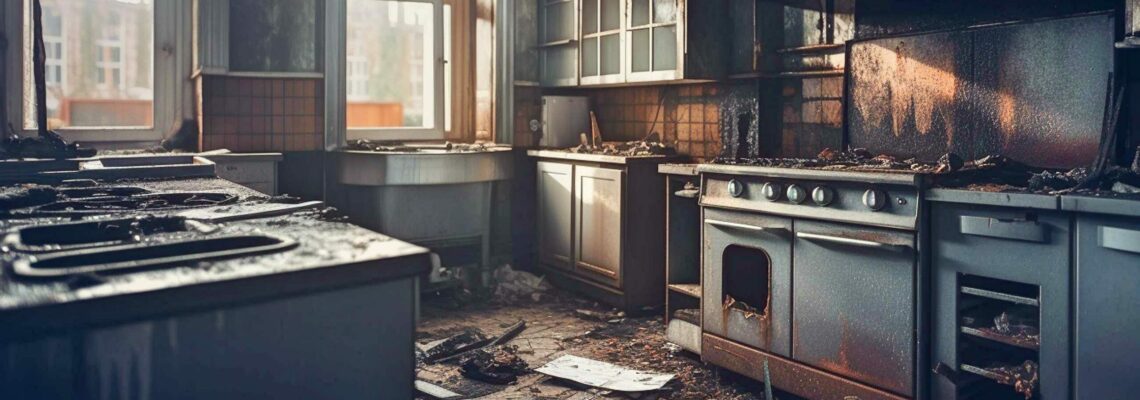After a fire in your home, there is a lot of visible damage that needs to be repaired. But there is another danger that lurks in the air, on the walls, and within the contents of your home long after the visible damage has all been repaired: smoke damage.
This invisible enemy can continue its destructive path long after the fire has been extinguished, compromising the structural integrity of your home and posing significant health risks to your family.
Smoke damage takes several forms, each varying in severity and requiring a specific mode of treatment. One of the key dangers lies in the soot that is left behind.
Soot is a residue that stems from burning materials that aren’t completely consumed by fire. It’s a sinister mix of dust, oils, and other particulates that can infiltrate every nook and cranny of a home, discoloring walls, tarnishing metals, and embedding itself into fabrics, leading to prolonged exposure and health hazards.
Wet smoke and dry smoke are categories of smoke damage, each born from different types of fires and temperatures. Wet smoke is a result of a low-heat, smoldering fire and is characterized by a sticky, smeary residue accompanied by a pungent odor. This type of smoke damage is particularly difficult to clean due to the oily texture of the residue.
Dry smoke emerges from fast-burning, high-temperature fires and leaves behind a powdery, non-smeary residue.
The dangers associated with smoke damage aren’t just structural. They also pose significant health risks to individuals exposed to the remnants of a fire.
The particles within smoke can include a combination of chemicals and substances that can be harmful when inhaled or come into contact with the skin.
People with respiratory conditions, the elderly, and children are particularly vulnerable to the effects of smoke inhalation, which can exacerbate existing health issues or create new ones.
The path to recovery after a house fire begins with a comprehensive assessment by fire and smoke damage restoration professionals that are skilled in identifying the extent and type of damage incurred.
Cleaning up smoke and soot damage requires specialized equipment, techniques, and expertise to ensure that both visible and hidden damage is addressed, and potential health risks are mitigated.
In the aftermath of a fire, the focus is initially on the visible destruction. But understanding and addressing smoke and soot damage is equally critical to the restoration of a safe, healthy living environment.
Enlisting the expertise of a fire damage remediation company you can trust is an indispensable step in navigating the complexities of smoke damage, ensuring that the invisible threats are identified, addressed, and completely eradicated to restore the sanctity and safety of your home.
If you ever need help with repairing fire and smoke damage after a house fire, call the professionals at PuroClean Certified Restoration. We’ll make sure the job is done right.


